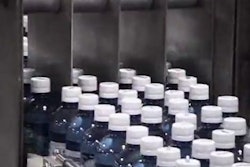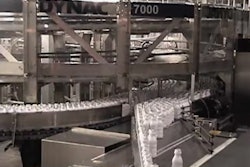Usually, bigger is better, especially if you’re in the market for more capital. In other matters, issues such as taxes and dental cavities, smaller is better. And it must also be true in contract packaging. This month’s special report shows that most of contract packaging companies that participated in our survey are companies smaller than many of their clients. Yet, their growth is undeniable; it’s not only borne out by our research, but other surveys show strong shifts of packaging from manufacturers to outsourced companies of every kind. These range from small sheltered workshops to very specialized, high-technology companies. The key word here may be specialized. It’s unlikely that contract packagers will take much business away from high-output packaging operations that can operate profitably on minuscule margins. Why are so many foods like Campbell Soup’s still sold in tinplate cans and glass containers? Because those packages deliver a dependable product at a very inexpensive price. Many of those can- or jar-filling lines were paid for generations ago. And while these package styles are not the first place you’d look for packaging innovations, two-piece cans, full-panel easy-open lids and new decorating and labeling technologies are just some of the incremental package improvements in recent years. Campbell Soup certainly has introduced new alternatives to cans and glass jars with prepared soups in plastic jars. But which package styles sell the highest volumes for them? Check the soup aisle at virtually any supermarket. However, when you look at, say, refrigerated or frozen soups, you’ll find some in flexible, stand-up pouches. Although not high-volume products, this unusual package style can be profitable, too. Are all of these products packed in-house? No, this is an example of the kind of specialization that makes outsourcing of packaging so desirable for many companies. Does this mean there are contract packagers just waiting for business with stand-up pouch filling equipment? Not necessarily. Sure, some companies have that capability. But, based on anecdotal evidence, I believe that much—maybe most—of this volume goes through co-packers, companies that already operate this type of equipment for their own products. In the past, many companies that invested in unusual or innovative packaging techniques were reluctant about taking on outside business. They believed that more products available in their unique package would dilute the distinctiveness of their own product/package concept. Other companies—even those without a unique package—simply would refuse to entertain outside business for a wide variety of reasons. Today, the measurement of capacity utilization plays an increasing role in the profitability equation. In other words, by taking on outside packaging business to augment its own production, a manufacturer can see surprising increases in uptime on its packaging equipment. And in some cases, this extra business looks to be almost pure profit, especially if it can be handled by labor already in place. The reluctance of manufacturers to co-pack for other companies hasn’t completely disappeared. But my guess is that co-packing accounts for a very significant part of the contract packaging growth. And companies that co-pack may be every bit as large as their contract clients. Perhaps this explains why there are so many partnerships between the two parties. Big or small? As you can see, the new, improved Packaging World believes that smaller is better and more convenient. For years, readers have told us the magazine’s only drawback was its physical size. Publisher Joe Angel addresses this on p. 8. We’d love to hear your comments.
PipeLine: Size does matter
With apologies to Dr. Ruth, I think you’ll agree that, in many areas, size can be an important advantage.
Dec 31, 2001
Companies in this article
Videos from Universal Labeling Systems, Inc.
Machinery Basics
Annual Outlook Report: Sustainability
The road ahead for CPGs in 2025 and beyond—Packaging World editors review key findings from a survey of 88 brand owners, CPG, and FMCG readers.
Download Now
Get a jump on your 2026 packaging & processing goals at PACK EXPO East.
Be the first to find what’s next in packaging & processing at PACK EXPO East. See new solutions from 500 exhibitors, uncover creative ideas for 40+ verticals and gain inspiration from free sessions on industry trends—all in one trip to Philadelphia.
REGISTER NOW & SAVE
Downloads

























